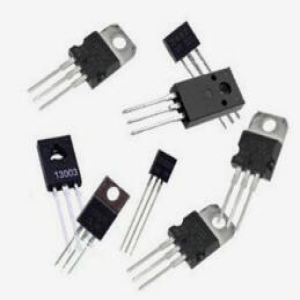
Triode and relay are two different electronic components. They are obviously different in working principle, application range and performance characteristics.
First, a triode is a semiconductor device, which is composed of three control electrodes (base, emitter and collector). It controls the current amplification or switching action in the output circuit according to the input current or voltage signal. Triode is often used in analog circuits as an amplifier FDN5618P Realization of regulator, switch and other functions. It has high frequency response, small size, low power consumption and other characteristics, and is widely used in electronic equipment.
A relay is an electromagnetic device consisting of coils and contacts. When the coil is energized, the generated magnetic field attracts the contact to close or open, thus realizing the signal conversion or circuit control. The relay has large current and voltage capacity and can isolate high voltage and low voltage circuits. It is commonly used in power systems, automation equipment, motor control and other fields.
In contrast, the triode works faster in the circuit and can achieve higher frequency response; However, due to the limitation of mechanical components, the relay usually works slowly and cannot meet the requirements of high frequency response. In addition, the triode is often used as an active device, which needs external power supply and is subject to its working area; As a passive device, the relay does not need external power supply, and can still maintain the output state when the input signal is disconnected or open circuit.
Although both relays and triodes can be used to realize signal conversion or amplification, they have significant differences in the following aspects:
1. Operating speed: Due to the semiconductor technology, the triode has a fast switching speed and response time, which is suitable for high frequency electronic applications. However, due to the existence of mechanical contacts, the relay operates slowly and is suitable for relatively low frequency applications.
2. Power handling capacity: the relay can handle higher voltage and current, suitable for high-power switching applications. However, the power processing capacity of triode is relatively small, and it is usually suitable for low-power electronic equipment.
3. Reliability: because the relay adopts mechanical contact, its service life is limited, and it is vulnerable to vibration and overload. With the increase of service time, failure may occur. The triode has no mechanical moving parts, so it has higher reliability and longer service life.
As the triode is a semiconductor device, its main purpose is to amplify and control the current, rather than the actual switching function. In addition, the triode needs to provide bias voltage and stable current when working, which is relatively complex, while the relay is simple and easy to use. Therefore, although triodes can achieve some control functions similar to relays, they are fundamentally different devices and cannot simply replace each other.
In conclusion, although the functions of triode and relay are similar in some aspects Operating principle, application range and performance characteristics There are significant differences between the two. The specific choice of which device to use depends on the specific application requirements and the requirements for switching speed, power processing capacity and reliability.

